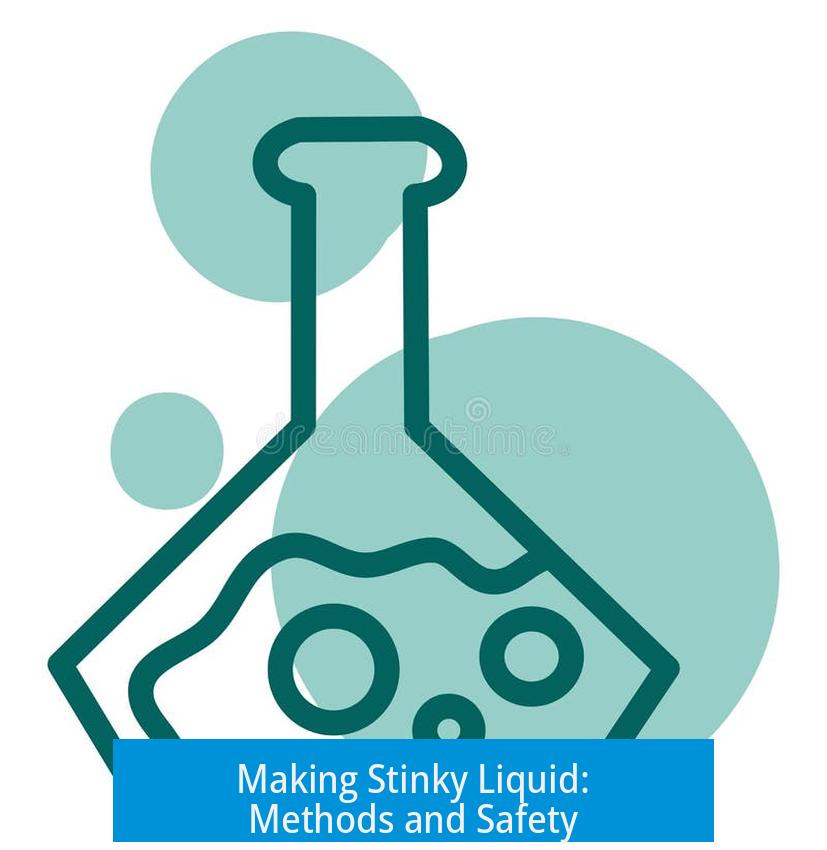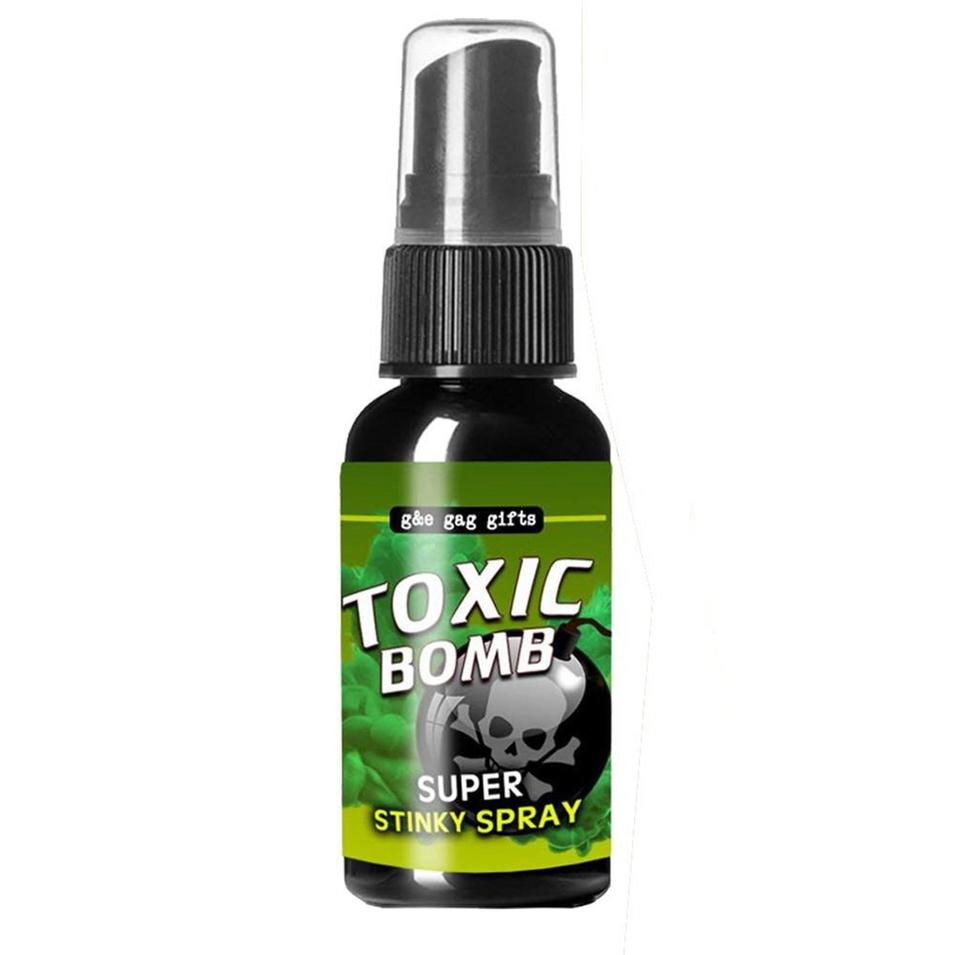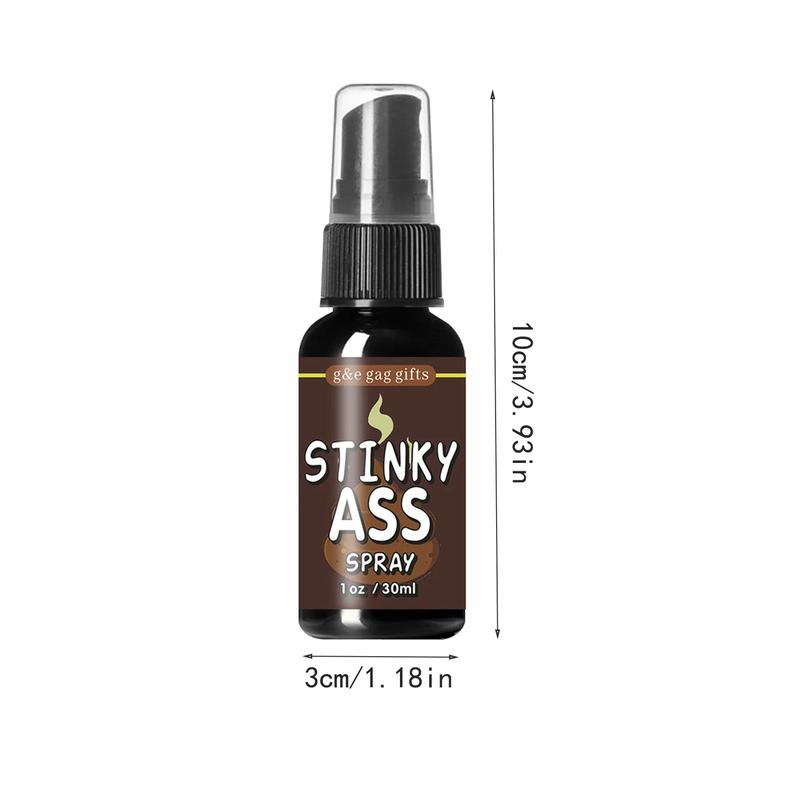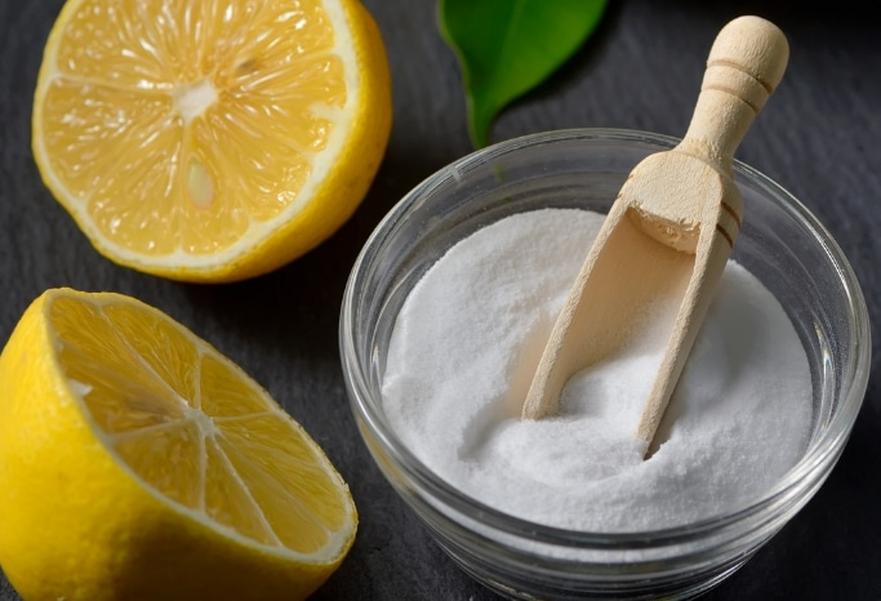Making Stinky Liquid: Methods and Safety

Stinky liquids are often created by triggering natural chemical processes that produce foul odors, commonly used in pranks or educational demonstrations. This article explores various methods to create such liquids safely, describes the chemistry behind the odors, and highlights precautions to take.
Classic Egg Stink Bomb

This method uses an egg to generate a foul-smelling liquid via natural decomposition.
- Materials: Fresh or hardboiled eggs, heavy-duty needle or pin
- Process: Poke the eggshell with a needle to create holes. Leave the egg in the sun to decompose. Wrapping it in foil or storing it in salt may slow evaporation and prolong the smell, though salt’s effectiveness is uncertain.
- Chemistry: As the egg decomposes, bacteria break down sulfur-containing proteins to produce hydrogen sulfide (H2S), which emits the characteristic rotten egg odor along with other decay scents.
- Use: Crushing or throwing the egg releases the stinky liquid and gas.
Hydrogen sulfide affects the sense of smell by deadening it temporarily and can be toxic in high concentrations. Typical rotten eggs produce only low levels that do not pose a significant health hazard unless ingested.

Nasty Burning Hair and Rubber Stink Bomb
This method creates an unpleasant odor by combusting organic matter wrapped in paper.

- Materials: Hair (human, pet), rubber bands, notebook or newspaper, matches or lighter
- Process: Compress hair with rubber bands, wrap in paper, and ignite. The burning produces a strong, unpleasant odor due to combustion of keratin and rubber compounds.
This method is not recommended due to production of potentially toxic fumes. Burning rubber generates hazardous chemicals such as sulfur dioxide and volatile organic compounds (VOCs).
Ammonium Sulfide Stink Bombs

Ammonium sulfide releases a potent foul smell commonly used in commercial prank stink bombs.
- Description: When ammonium sulfide contacts moisture, it releases hydrogen sulfide gas, known for its strong rotten egg smell.
- Preparation: Though relatively simple to prepare chemically, it poses health risks greater than rotting eggs. The gas can cause respiratory irritation.
Due to the chemical hazards, this method is less safe and less recommended for home experiments.

Home-made and Alternative Stinky Liquids
- Rotten Cabbage: Allowing cabbage to ferment or rot creates a malodorous liquid from sulfur compounds released during decay.
- Copper and Acid Reaction: Contact of acid with oxidized copper produces copper sulfides and other compounds that may emit unpleasant smells. This method requires handling corrosive acids and is not recommended without proper knowledge and protection.
Using Commercial Stink Bombs
Commercially available stink bombs can be purchased from retailers, providing a safer and controlled odor release without hazardous chemical preparation.
Safety Considerations
- Hydrogen sulfide is toxic at high concentrations and can impair the sense of smell.
- Avoid inhaling fumes directly, especially from burning rubber or ammonium sulfide reactions.
- Proper ventilation is essential during all experiments producing malodorous or toxic gases.
- Do not ingest any materials used in making stink bombs.
- Follow local laws and regulations regarding use of pranks or homemade chemicals.
This information serves educational purposes only. Users assume responsibility for safe handling and legal compliance.
Summary of Key Points
- The stinky liquid from a classic egg bomb results from hydrogen sulfide gas produced by egg decomposition.
- Burning hair and rubber produces strong odors but also hazardous fumes and is unsafe.
- Ammonium sulfide stink bombs are potent but pose greater chemical risks.
- Rotting cabbage and copper-acid reactions release unpleasant sulfur compounds but require caution.
- Commercial products offer safer alternatives for stink-inducing effects.
- Safety precautions include avoiding inhalation, ensuring ventilation, and observing legal restrictions.
Making Stinky Liquid: A Surprisingly Interesting Guide to Creating the Ultimate Stink Bomb
Yes, making stinky liquid is both an art and a science, and surprisingly simple with the right materials and methods. Whether you want to prank your friends or demonstrate some basic chemistry, creating a stink bomb or stinky liquid involves some straightforward steps, common household items, and a bit of patience. Let’s stroll through the realm of foul smells and see what it takes to craft your own nose-wrinkling concoction.
First off, let’s get one thing clear: The stinky liquid you want to make depends on what kind of stink you prefer. Are you after the classic rotten egg aroma? The pungent burnt hair and rubber smell? Or the noxious fumes from a little chemical reaction involving ammonia and match heads? Spoiler: safety should always be your sidekick in this journey.
The Classic Egg Stink Bomb: A Timeless Stinky Liquid
Want a stink bomb that strikes the nostalgic note of rotten eggs? This is your go-to method.
Start with eggs. Fresh or hardboiled, eggs are the core material. Grab a heavy duty needle or pin. Gently poke the eggshell to give the decay process an entry point. Then, leave the egg out in the sun to putrefy. This is where the magic (or stench) happens as bacteria break down the egg, releasing hydrogen sulfide—the infamous rotten egg smell.
Wrapping the egg in aluminum foil is optional but helps speed up or concentrate the putrefaction process. There’s an interesting tip: some swear by storing the egg in salt to preserve the stink bomb longer, although this isn’t confirmed. Still, it’s worth a try if you want a stink bomb that lasts a bit.
When thrown or crushed, the egg emits that classic hydrogen sulfide smell and other nasty odors of decay. Be warned, hydrogen sulfide can deaden your sense of smell and, in excessive amounts, can be toxic. But a single rotten egg won’t harm you—just don’t eat it!
This method remains probably the safest and the simplest way to get a stinky liquid or stink bomb effect.
Burning Hair and Rubber: The Nasty Smell with a Dose of Danger
If your stinky liquid ambitions go beyond eggs, there’s the burning hair and rubber method. You’ll need hair or animal fur—human, cat, dog, whatever you can gather—and some rubber bands to bundle it all.
Here’s how it works: wad up the hair, secure it tightly with rubber bands, wrap that bundle in notebook paper, and set it on fire carefully (outdoors, well ventilated). The result? A pungent, unmistakable burning hair and rubber odor that’s sure to clear a room quickly.
Warning: burning rubber releases toxic compounds. It’s a stink bomb that comes with a health risk. Personally, I recommend sticking with rotting eggs or seafood odors over this method.
Despite the stink superiority, this approach often lands pranksters in hot water (figuratively and literally) because of safety concerns and the potential toxicity of fumes.
Ammonium Sulfide Stink Bombs: Chemistry Class Goes Rotten
Now for those who like a little chemistry mixed in with their stinky liquid adventures. Prank stink bombs often release ammonium sulfide, a chemical notorious for its powerful rotten egg-like smell.
Here’s a rough recipe:
- Place some match heads inside a clean, unused bottle with a cap.
- Add about two to three tablespoons of household ammonia.
- Seal and swirl the bottle gently to mix the ingredients.
- Wait three to four days. This incubation allows the chemical reaction to generate ammonium sulfide [(NH4)2S].
After this waiting period, uncapping the bottle releases that eye-watering smell. However, unlike natural decay from eggs, this is more hazardous. Ammonium sulfide can be irritating and harmful in concentrated doses.
While it’s fairly easy to make an ammonium sulfide stink bomb, it’s not as safe as rotten eggs or burning hair. Use with extreme care, if at all.
Other Homemade Stinky Liquids and Tips
Not in the mood for eggs or chemicals? Rotten cabbage works wonders as well. Just let the cabbage rot. The decomposing leaves emit a potent smell due to sulfur compounds breaking down, similar to eggs.
Another tidbit: if you have copper that has tarnished to black, applying an acid might produce copper sulfide—a compound linked to the sulfur stink family, though less commonly used deliberately for stink bombs.
Using Commercial Stink Bomb Products
Let’s be real. If all this talk of poking eggs, burning hair, or concocting ammonium sulfide sounds like too much effort (or risk), you can always just buy stink bombs online, such as on Amazon. These are specially made, tested products designed to give you the stink you want without the hassle or risks of DIY experiments. Consider this the “fast food” of stinky liquids: quick, reliable, and less likely to send you to the ER.
Safety First: Because No One Wants to Faint from Their Own Prank
It’s tempting to dive in and craft the ultimate stink bomb masterpiece, but safety cannot be stressed enough. Hydrogen sulfide gas from rotten eggs irritates your respiratory system and dulls your sense of smell. Ammonium sulfide and burning rubber fumes are even more hazardous.
Don’t breathe in sulfur-based gases purposely or in large amounts. Safety precautions include doing these activities outdoors, in well-ventilated areas, and away from bystanders, especially children and pets.
Also, please use these stink bomb methods for harmless fun or education only. Don’t disrupt public spaces or cause harm. And definitely avoid ingesting any of the substances mentioned.
A responsible stink maker is a successful stink maker.
Final Thoughts: What’s Your Stink Style?
Making a stinky liquid or stink bomb can be as easy or complicated as you want. Classic rotten eggs represent the old faithful—natural, simple, and safe enough for controlled use. Burning hair and rubber is the rebellious, toxic cousin you might want to avoid. Ammonium sulfide bombs let you play chemist but come with real safety warnings.
Which method fits your style? Are you an egg pocker or a chemistry tinkerer? Or will you just order your stink bombs online and keep your hands clean?
Regardless of your choice, understanding the science behind these stink bombs demystifies what makes things smell that bad, and why human noses react the way they do. It’s a smelly science with real chemistry—and now you’re in on it.
What materials are needed to make a classic egg stink bomb?
You need fresh or hardboiled eggs and a heavy duty needle or pin to poke the shell. Optionally, you can use foil to wrap the egg while it rots in the sun.
How does storing the egg in salt affect the stink bomb?
Storing the egg in salt might help preserve the stinky smell longer, though this is not confirmed. The salt could slow down the decay process.
What causes the smell in an egg stink bomb?
The rotten egg smell comes from hydrogen sulfide gas and other decay odors released when the egg shell is broken or crushed.
Are stink bombs made from burning hair and rubber safe?
Burning hair and rubber produces a strong smell but may release toxic compounds. It’s less safe than using rotten eggs or seafood for stink bombs.
Why are ammonium sulfide stink bombs less safe than egg-based ones?
Ammonium sulfide stink bombs are easy to make but involve chemicals that can be more hazardous compared to natural decay odors from rotting eggs.





Leave a Comment